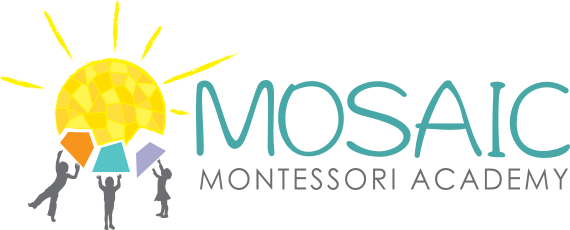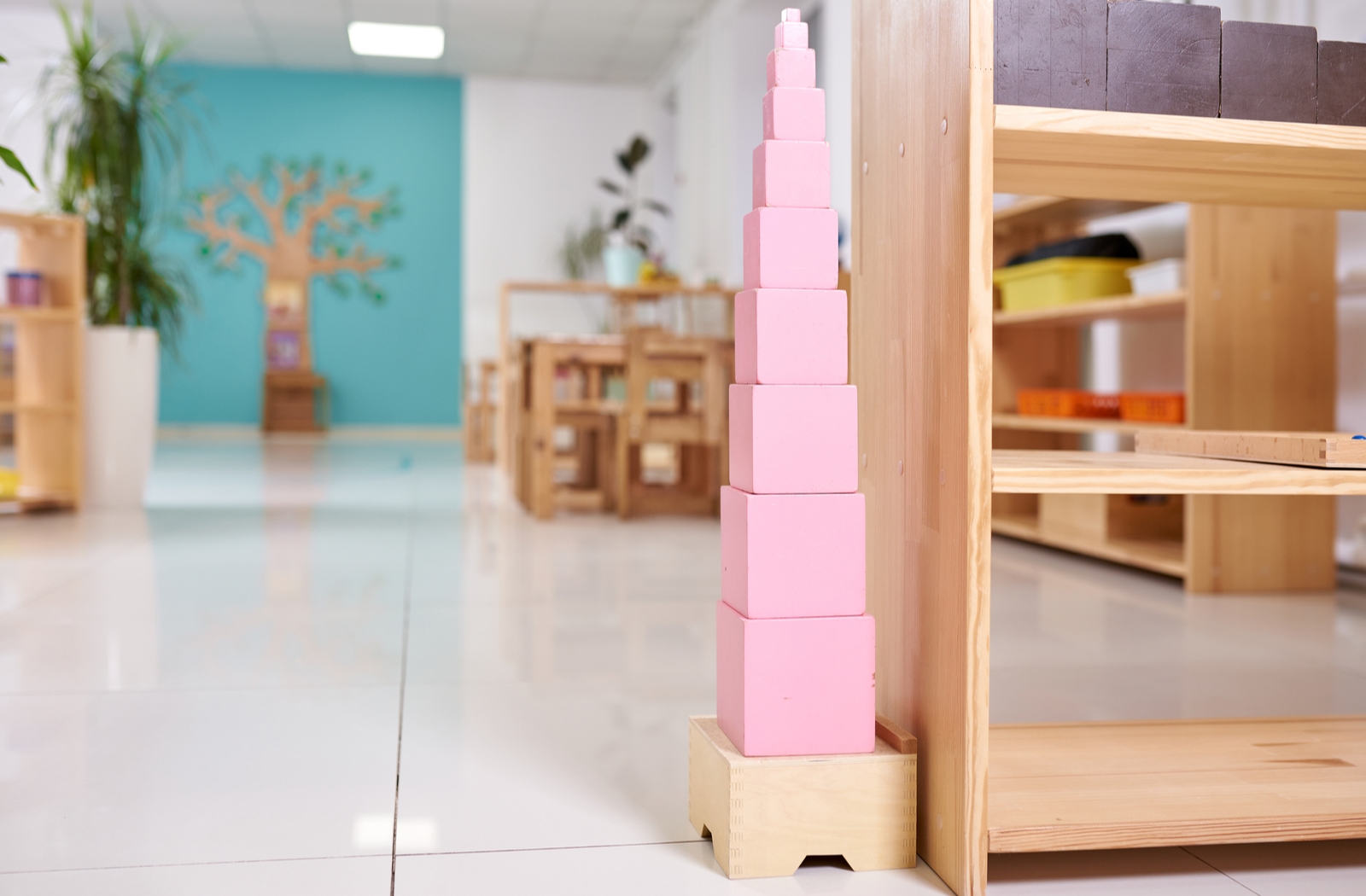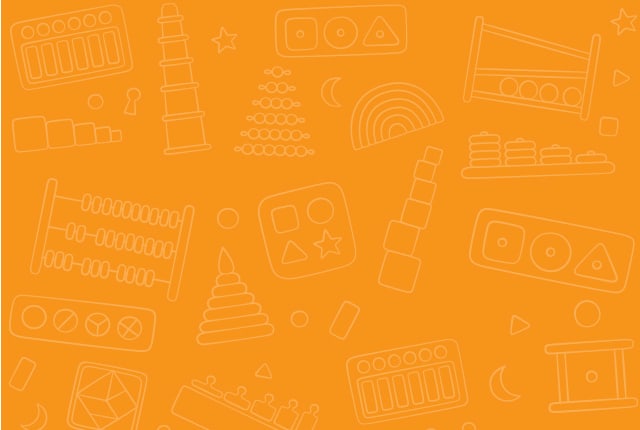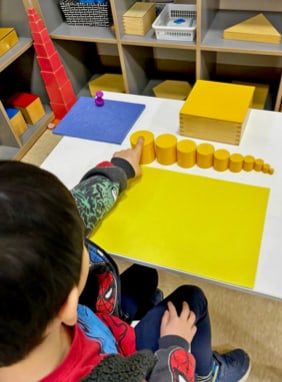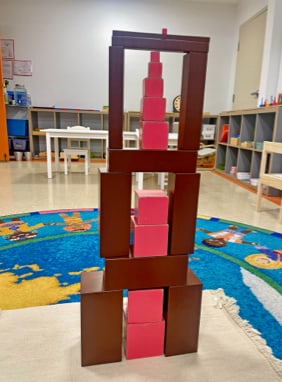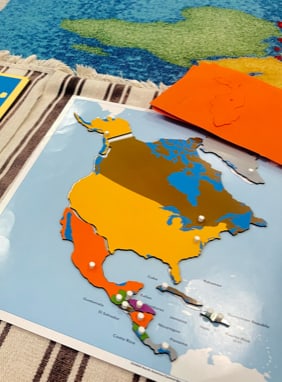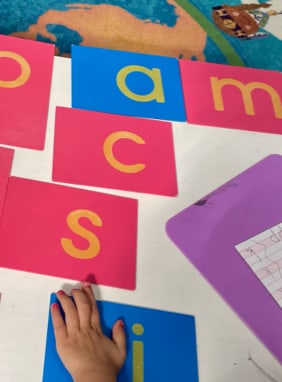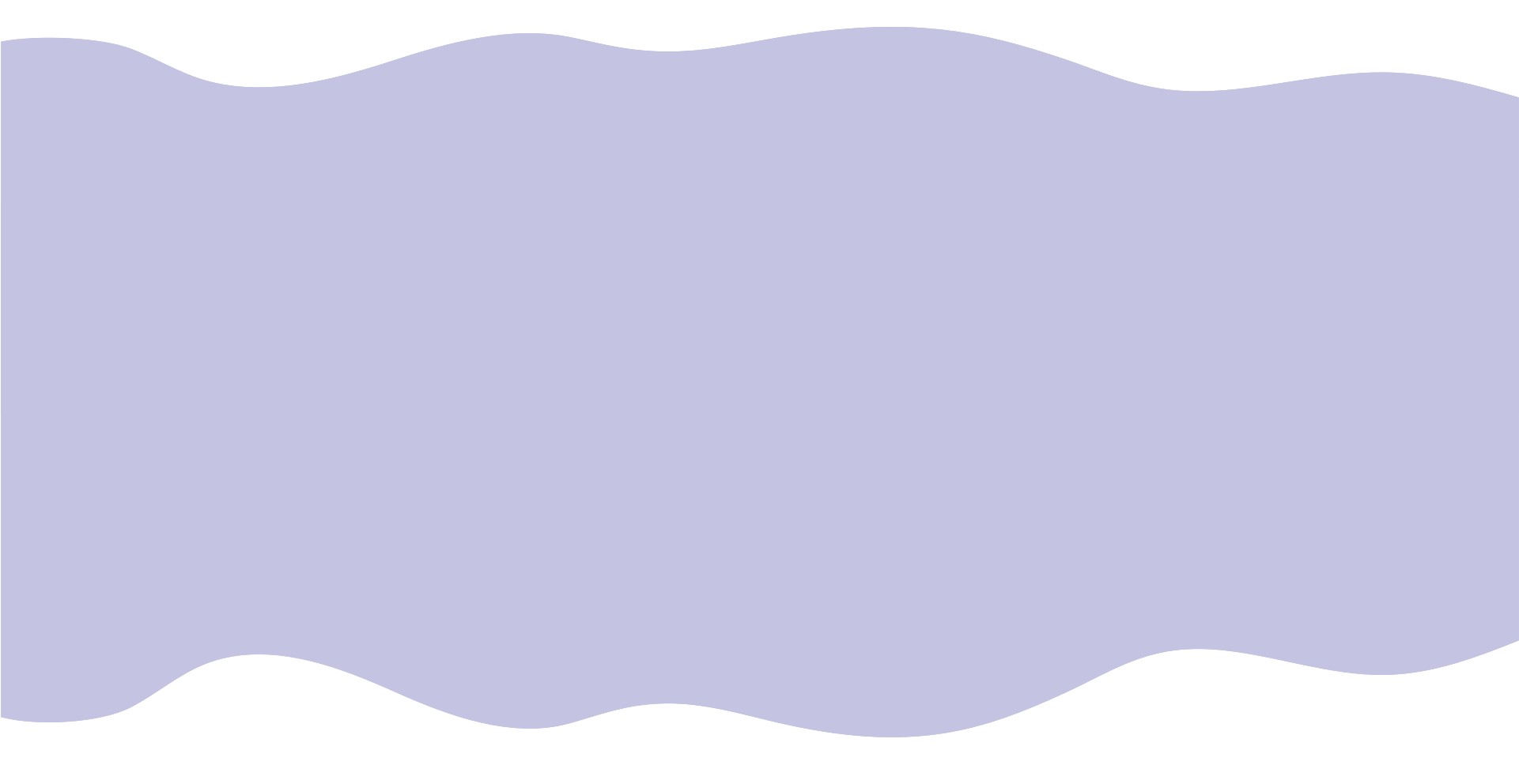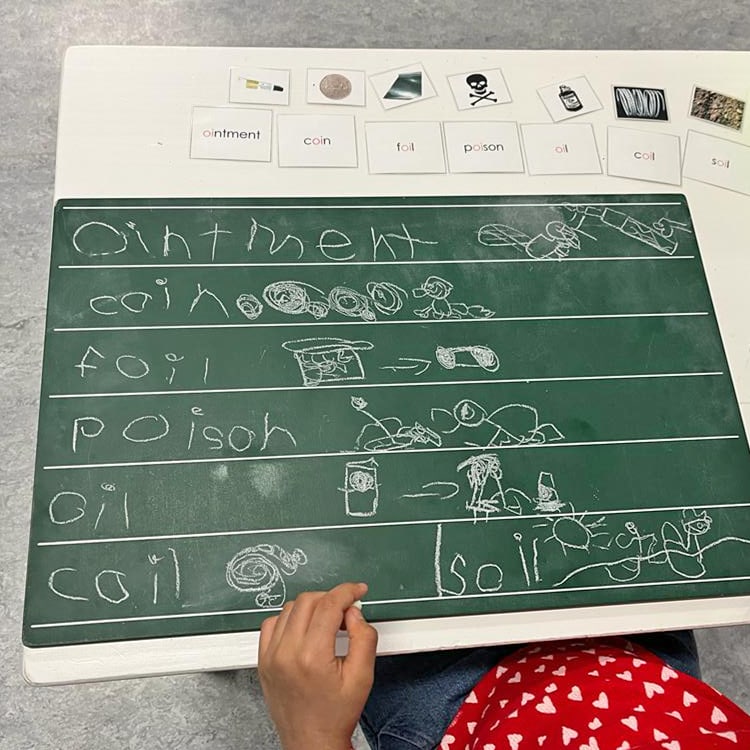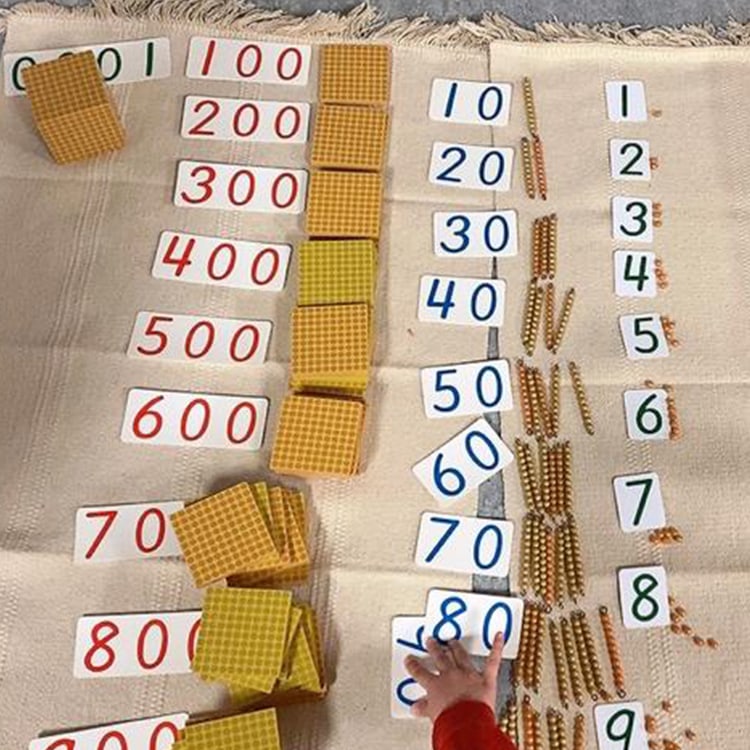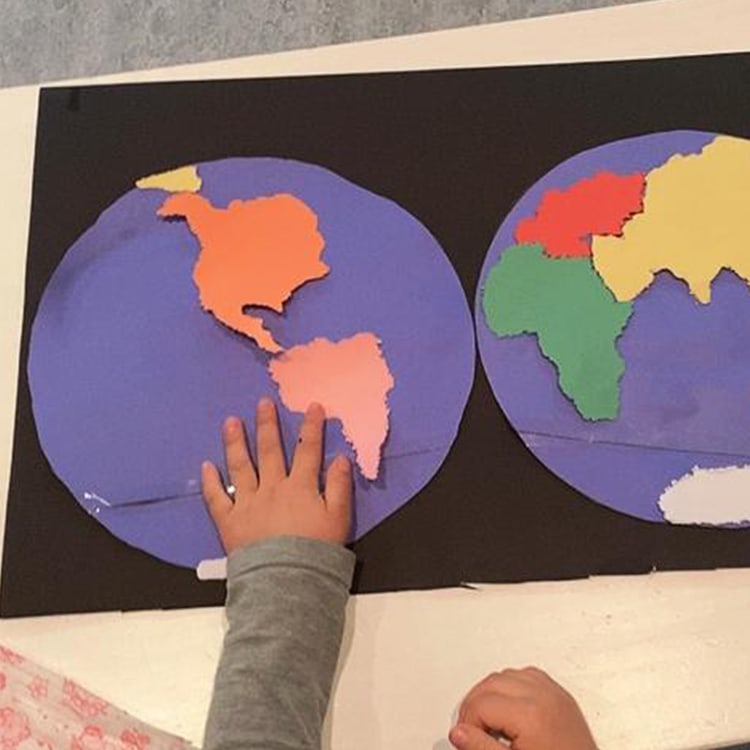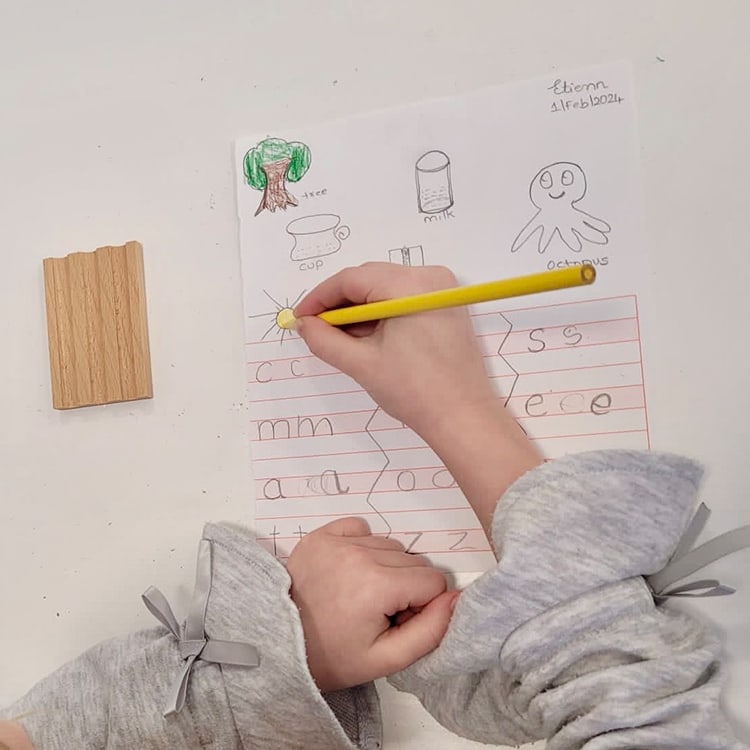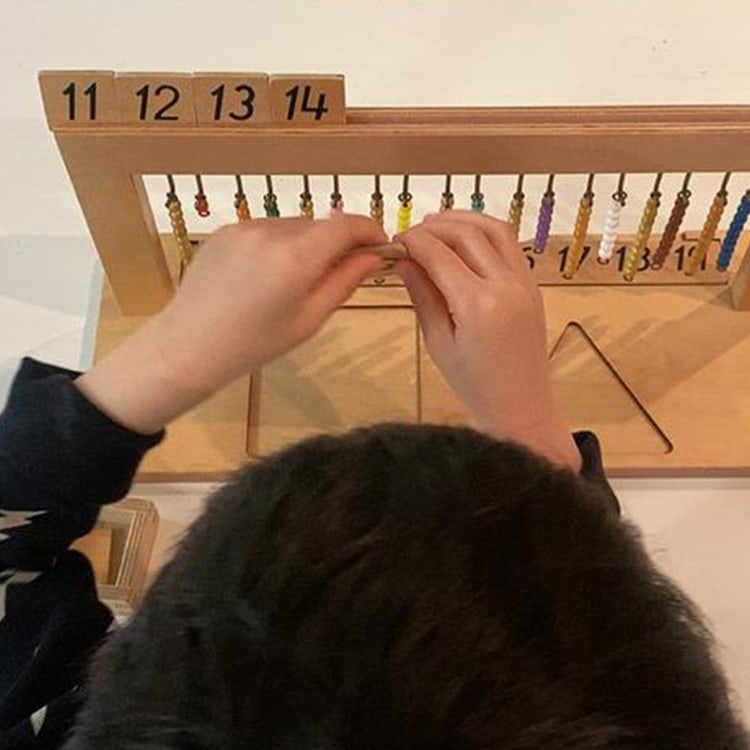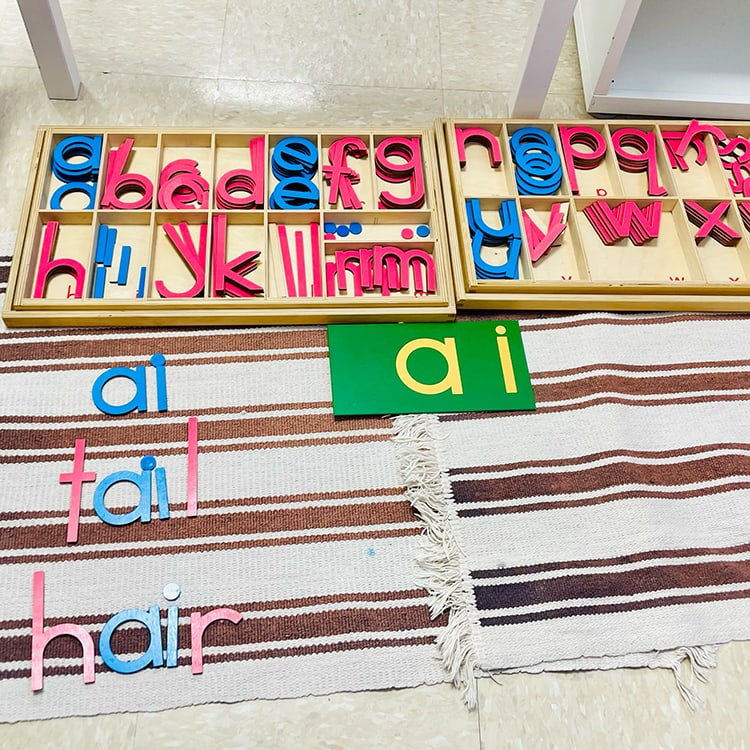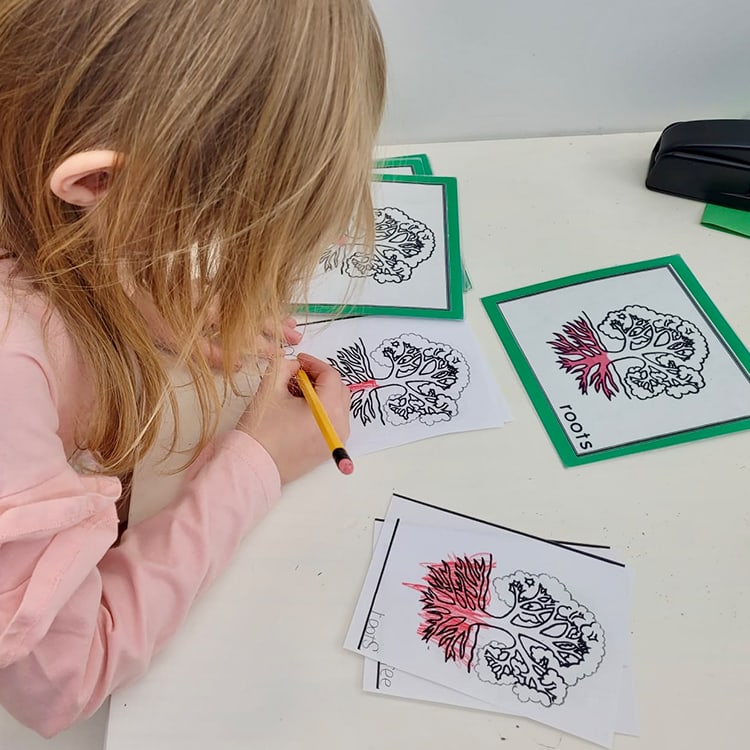As a cornerstone of Montessori education, the Pink Tower is a beloved and iconic educational tool recognized for its simplicity and impact on early childhood development. At Mosaic Montessori Academy, we use the Pink Tower as part of our process for helping kids grow and learn holistically.
The Pink Tower is a set of wooden cubes that increase in size, and it is used to help foster an understanding of space and shape. Instead of being patterned or decorated, the Pink Tower is uniform in colour to reinforce a focus on the concept of size. The Pink Tower is just 1 of several essential Montessori materials we use to support the healthy development of children.
What Is So Special About the Pink Tower?
Each wooden cube in the Pink Tower is measured to a specific dimension, from 1 cubic centimetre to 10 cubic centimetres. The cubes increase in size to help develop children’s understanding of dimensional relationships and their visual differences.
Unlike other materials that may distract with colours and patterns, the Pink Tower’s uniform pink colour helps create a seamless learning experience, allowing children to focus solely on size. In working with the Pink Tower, your child can develop a sense of scale, size, and shape while advancing their fine motor skills.
What Is the Purpose of the Pink Tower?
The Pink Tower serves multiple educational purposes, each contributing to your child’s overall growth and development. Primarily, it is used to refine your child’s visual sense and motor skills.
By stacking the cubes from largest to smallest, children learn to recognize differences in size, which can enhance their ability to make distinctions in their environment. The Pink Tower also promotes concentration and coordination, as your child must carefully handle and balance the cubes to form a stable tower.
Developing Sensorial Skills
Sensorial education is a fundamental aspect of Montessori philosophy. As a part of that sensorial focus, the Pink Tower is designed to isolate the concept of size, helping children develop their visual sense and spatial awareness. Through repeated handling and organization of the cubes, children can sharpen their ability to perceive and categorize differences in their surroundings.
Enhancing Motor Skills
The act of arranging the Pink Tower requires precision and control. As children manipulate the cubes, they can refine their fine motor skills. That physicality can reinforce hand-eye coordination, laying the foundation for more complex activities that require dexterity and accuracy.
How Does the Pink Tower Work?
Exercises with the Pink Tower follow a specific sequence that balances method and intuition. While we use the Pink Tower at Mosaic Montessori Academy, the material can also be brought into your home to create a Montessori environment.
- Preparation: Begin by placing all 10 cubes randomly on a mat or table. Ensure your child has enough space to work comfortably.
- Observation: Encourage your child to observe the cubes and identify the differences in size.
- Selection: Starting with the largest cube. Allow your child to select it and place it on the mat.
- Stacking: Encourage your child to continue selecting the next largest cube and place it directly on top of the previous one. This process is repeated until all cubes are stacked, forming a tower from the largest to the smallest.
- Completion: Once the tower is complete, your child can admire their work and reflect on the process.
The Pink Tower’s sequencing not only teaches children about size and order but also helps instill a sense of accomplishment and pride in their ability to complete the task independently, a cornerstone of the Montessori Method.
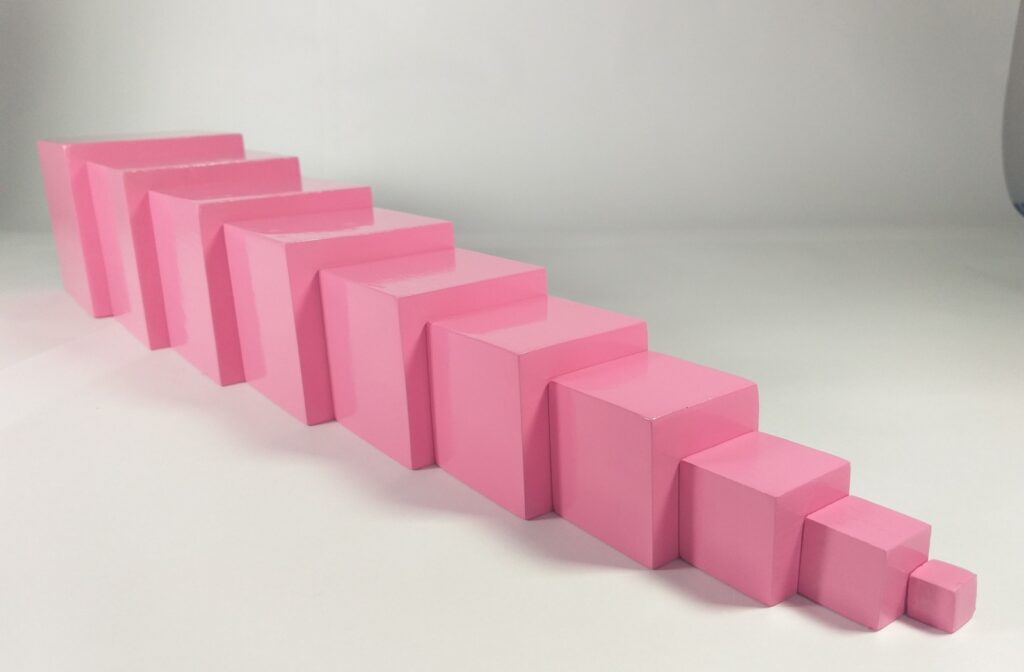
What Are Montessori Materials?
Montessori materials are educational tools or objects that adhere to the principles of Montessori pedagogy. These materials are characterized by their simplicity, functionality, and ability to isolate a single concept or skill. They are designed to be manipulated, allowing children to learn through direct interaction and sensory experiences.
Characteristics of Montessori Materials
- Control of Error: Montessori materials are designed to allow your child to identify and correct their mistakes independently.
- Aesthetic Appeal: They are visually appealing to attract your child’s interest.
- Hands-On Interaction: They are intended to be handled and explored by your child, promoting active learning.
- Purposeful Design: Each material targets a specific educational concept or skill.
What Is the Purpose of Montessori Materials?
Montessori materials are designed to support the holistic development of your child. Each material serves a specific educational goal, whether it be cognitive, sensory, or motor. The purpose of these materials is to provide hands-on learning experiences that encourage exploration, discovery, and self-correction.
Promoting Independence
One of the core principles of Montessori education is fostering independence in children. Montessori materials are intentionally crafted to help children identify and correct their mistakes without adult intervention. Independent and self-correcting play helps promote a sense of autonomy and confidence in your child’s abilities.
Encouraging Exploration
Early engagement can be crucial for developing a love of learning and a lifelong passion for discovery. Montessori materials invite your child to explore and engage with their environment. They are designed to be aesthetically pleasing and tactile, drawing your child’s interest and curiosity.
Supporting Developmental Stages
Each Montessori material is tailored to meet the needs of specific developmental stages. By providing age-appropriate challenges, these materials can help children build on their existing skills and knowledge, facilitating steady and progressive growth.
So Why Is It Pink?
The colour of the Pink Tower was picked with intention by Dr. Maria Montessori. She found that pink made a difference in the following areas:
- Visual Consistency: Pink provides a visual stimulus consistent with the primary learning objective. By removing colour variations, children can concentrate on the differences in size without any unnecessary distractions.
- Aesthetic Appeal: The soft and inviting shade of pink is often visually appealing to young children. It draws their interest and encourages them to engage with the material.
- Symbolic Significance: In Montessori philosophy, colours often carry symbolic meanings. Pink is associated with calmness and nurturing elements, aligning with Montessori education’s supportive and encouraging nature.
How We Can Help Your Child
The Pink Tower is more than just a set of blocks—it is a powerful educational tool that embodies the essence of Montessori education. Its thoughtful design and purposeful use can help nurture a child’s cognitive, sensory, and motor development.
For educators and parents passionate about child-centred learning, the Pink Tower offers a tangible way to support and enrich a child’s developmental path. By incorporating this and other Montessori materials into daily learning at Mosaic Montessori Academy, we can create an environment that helps foster curiosity, independence, and a lifelong love of learning.Contact us today to learn more about the transformative power of hands-on, child-centred education. Your child’s journey to learning and growth can begin here.
